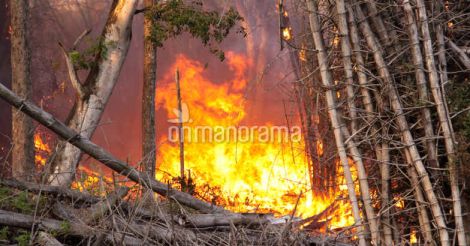The rising temperature has led to frequent wildfires at many places. At Mookkunnimala near Thiruvananthapuram, a helicopter had to be called in to contain a raging fire by aerially spraying water. Reports of fires at farms adjoining forests across Kerala are pouring in every day. The rubber plantations in the eastern part of the state are also feeling the heat of the fires.
Almost all instances of fires in Kerala are man-made. This means they can be prevented with a little caution. The undergrowth is the first area to catch fire in any vegetation. Most of them are sparked by the cigarette butts thrown carelessly by visitors or the bonfires lit by them.
Harsh sun or lightning had never been a common cause of wildfires in Kerala.
The soil of the forest and the plants that grow on them are complementary. Wildfires damage the soil, its moisture and the vegetation that thrives on it. The organic nature of soil is lost.
The fires are also caused by the people living on the fringes of the forest either for the protection of their crops or for the destruction of evidence after the plunder of timber. All the vegetation on the soil is reduced to ashes after a fire. Seeds are also destructed in this process. Even big trees are damaged. The ash on the surface is washed away in the next rain, leading to large-scale soil erosion. The soil becomes unable to absorb water.
Wildfires are reported from January and April. We are still not clear about the scope and depth of their impact. Many of these accidents can be prevented if forest department officials take a proactive stand to mark fire lines and to step up forest patrolling.
Fires that happen in inhabited areas, on the other hand, can cause diseases such as cancer because a lot of plastic material is burned along with the rubbish.
It is a common practice to burn twigs and dried leaves in farms and courtyards. There are very few things more harmful to nature. The biomass is supposed to decay and nourish the soil.
(The writer is a former Chief Conservator of Forest)

























 Representational image
Representational image